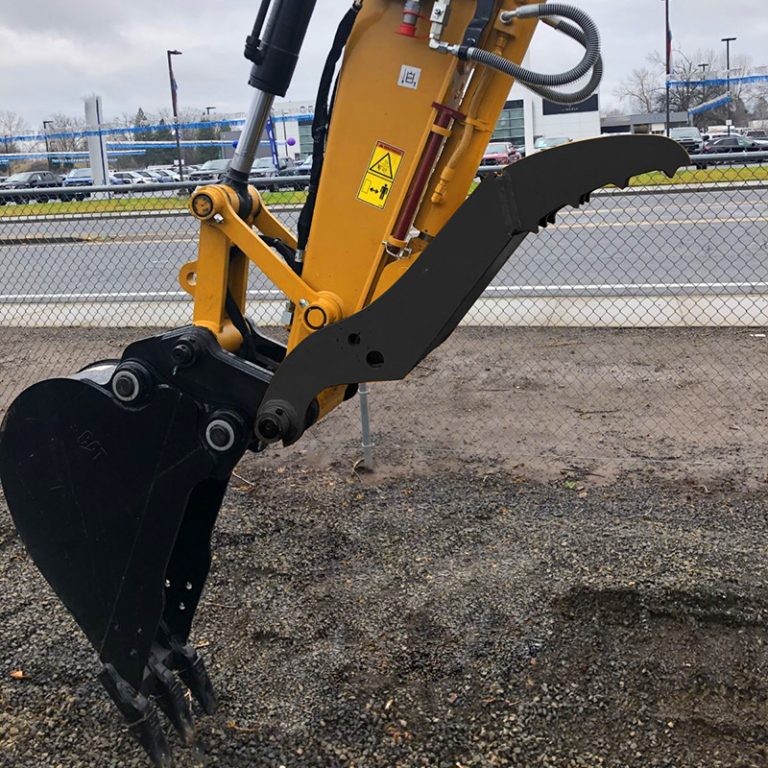How Are Dams Built? (Animated)
To build a dam, workers divert the water to then build on dry ground. Various methods like blasting diversion channels or creating cofferdams can divert water.
Dams make much of modern-day society possible — they create reservoirs that provide reliable water supply to our cities, farmlands, industrial projects and more. While they do so much for our communities, sometimes it’s easy to take them for granted. It’s not until looking at one of these massive underwater constructions that you might begin to stop and think, “How on Earth did we do that?”
If you’ve ever found yourself wondering this, keep reading. Here’s a step-by-step breakdown of how dams are built, their purpose and how they help our communities.
Table of Contents
- Step 1: Diverting the Water
- Step 2: Preparing the Dam’s Foundation
- Step 3: Supplying the Concrete
- Step 4: Creating the Dam
- Step 5: Filling the Reservoir
- FAQ About Dams
Step 1: Diverting the Water
The first step in building a dam is diverting the water. Construction engineers have a few ways of accomplishing this, but cofferdams and diversion channels are some of the most popular.
Cofferdams
While it may sound counterintuitive to say that building dams begins with building a dam, this is exactly what happens much of the time. Cofferdams are temporary structures that isolate a construction site from surrounding water flow. They can consist of soil, rock, concrete, sheet piles or other materials.
Cofferdams usually stand at least one meter (3 feet, 3 inches) above water level. If piles or other materials are driven into the water floor, a precise calculation will determine their depth. If they are driven too deeply, they can actually create pressure chambers that cause too much water seepage, rendering the cofferdam ineffective.
After the cofferdams are in place, pumps remove water inside the construction area. While it may seem like a safety issue to work within the cofferdam, it’s actually a very controlled environment, making it predictable and safe — as long as workers follow construction safety site fundamentals.
Cofferdams also play a fundamental role in how bridges are built.
Diversion Channels
Some rivers are too large for cofferdams to be practical or cost-effective. In this case, construction engineers might create diversion channels. This is how workers diverted the Colorado River when building the Hoover Dam. They blasted tunnels into the canyon walls that circumvented water around the planned construction zone.
After laying pipes into the blasted tunnels, the workers diverted around 5,600 cubic meters of water per second. That’s more than two Olympic-sized swimming pools emptied every second.
Step 2: Preparing the Dam’s Foundation
With water cleared from the construction site, workers can begin laying the dam’s foundation. For the dam to function safely and properly, the foundation must be strong enough to hold the dam’s weight and withstand the pressure chambers dams create.
The placement of the dam’s foundation can change how much pressure is put on the soil on the water’s floor. This ultimately creates varying levels of seepage, where water finds a path from one side of the dam to the other.
While seepage is unavoidable in rocky or sandy soil, it’s important to get it right. Too much seepage can actually create a quicksand effect in the soil, which is a main cause of dam failure.
To avoid this, engineers create meticulous calculations and resolve any weak points in the dam’s foundation. Sometimes, workers remove weak soil from the water floor and replace it with rocks or cement. They can also fill cracks in rocky bedrock with grout.
Step 3: Supplying the Concrete
Building dams often requires huge amounts of concrete. In fact, Hoover Dam workers poured more than 6.6 million tons of concrete from start to finish. This is enough to pave a road across America from coast to coast and was an important milestone in the history of concrete advancements.
Because of this huge need for concrete, it’s common for workers to build concrete batching plants on-site at the dam project to ensure enough supply.
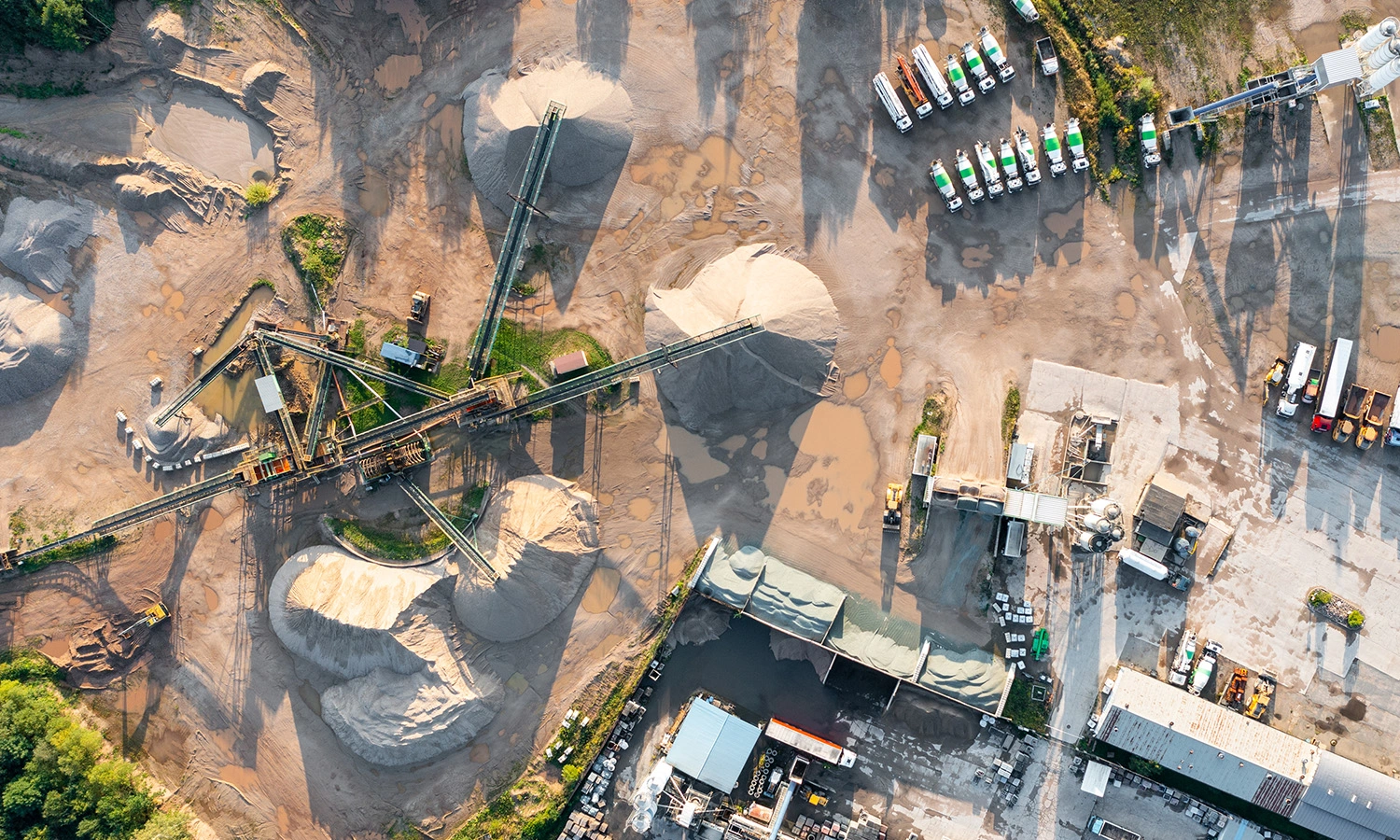
On-site, workers store aggregates and cement until they are ready to portion and mix them into concrete. Concrete trucks or other construction vehicles can then deliver the freshly mixed concrete wherever necessary.
Step 4: Creating the Dam
With supplies at the ready, dam construction can begin. This usually involves pouring concrete into forms made of timber. However, workers cannot pour all the concrete at once. If they did, the time it would take for the concrete to dry would be much too long — it would’ve taken about 125 years for the Hoover Dam to dry if workers poured concrete this way.
For this reason, workers only build forms and pour concrete about three to seven feet at a time. Forms will differ depending on what type of dam is being built, but many large dams feature arches that curve against the water. This shape provides greater strength, as the water behind the dam effectively pushes the dam further into the walls it rests against.
Step 5: Filling the Reservoir
With the dam completed, workers can begin redirecting the water flow back into the newly created reservoir. To maintain the desired water flow, workers take advantage of several features in the dam’s design:
- Spillways: These allow excess water to safely flow downstream in case of heavy rainfall or snowmelt, preventing overtopping, which can be dangerous and damaging.
- Outlet Gates: Workers can open or close these as needed to control water flow for things like maintaining a river’s flow, providing water for irrigation or generating hydropower.
- Intake Structures: These buildings use gate mechanisms to draw in water from the reservoir for use in municipal water systems, industrial processes, agricultural irrigation or other purposes.
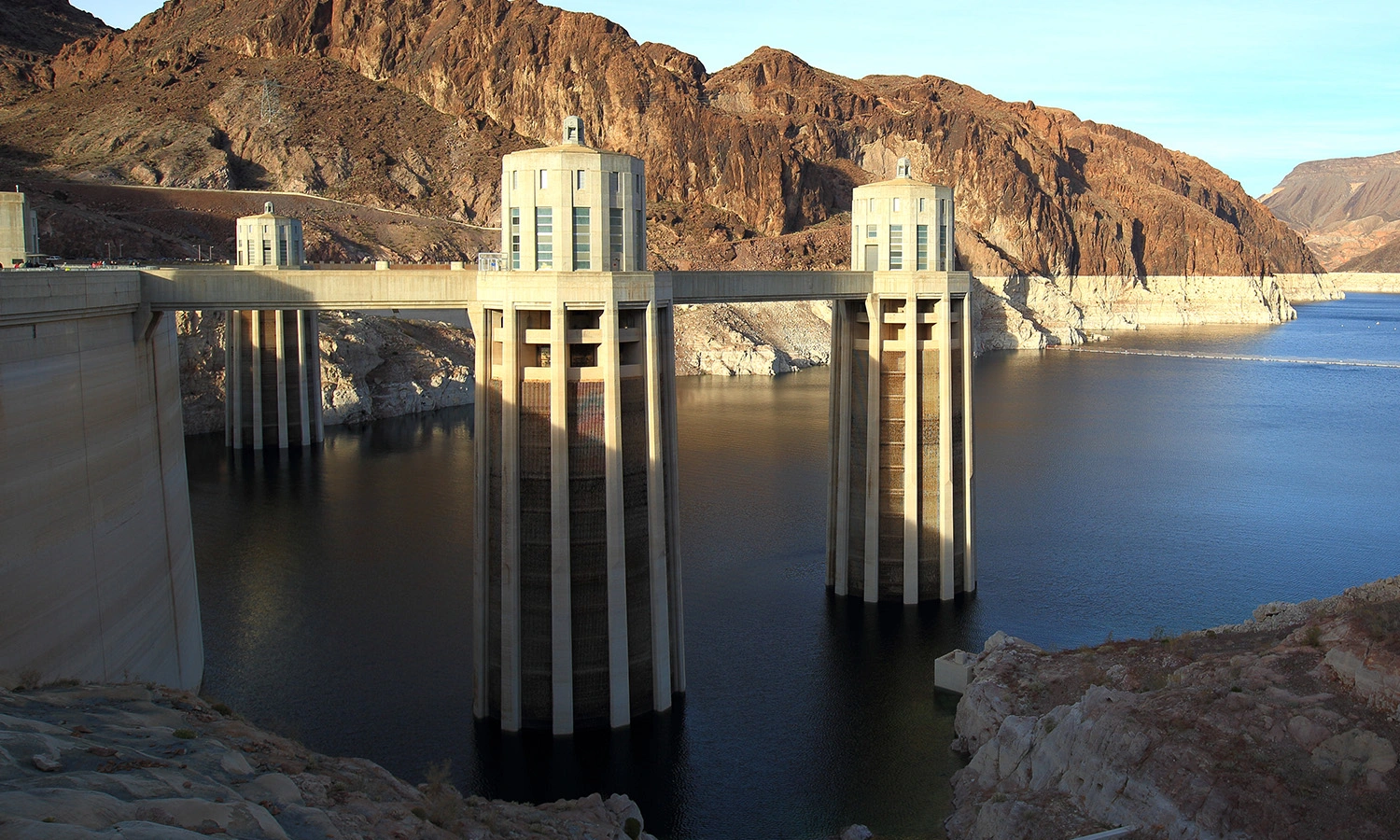
FAQ About Dams
Have other questions about dams? Here are the answers to some commonly asked questions.
Why are Dams Built?
Wherever you go, people need water. Dams harness water to support our communities in several ways, including:
- Water Storage: The water stored in a dam’s reservoir helps make sure cities and towns always have enough water for drinking, bathing and other everyday needs
- Hydropower: Some dams generate hydropower, which can help meet a city’s electric demands more sustainably.
- Flood Control: Dams can control water flow to prevent flooding after heavy rainfall or snowmelt.
- Irrigation: Small or large dams can redirect water flow to irrigate farmlands in preparation for agriculture.
- Ecosystem Support: Engineers build some dams with the environment in mind, helping maintain ideal habitats for aquatic life.
How Does a Dam Work?
Standard dams work by creating a pool of water, called a reservoir, that can supply communities with reliable water. Many dams today also generate hydropower to help produce sustainable electricity.
In these dams, water passes through a screen that filters out any rocks or large debris and then runs past a turbine connected to a generator. The water spins the turbine, creating mechanical energy the generator can convert to electricity.
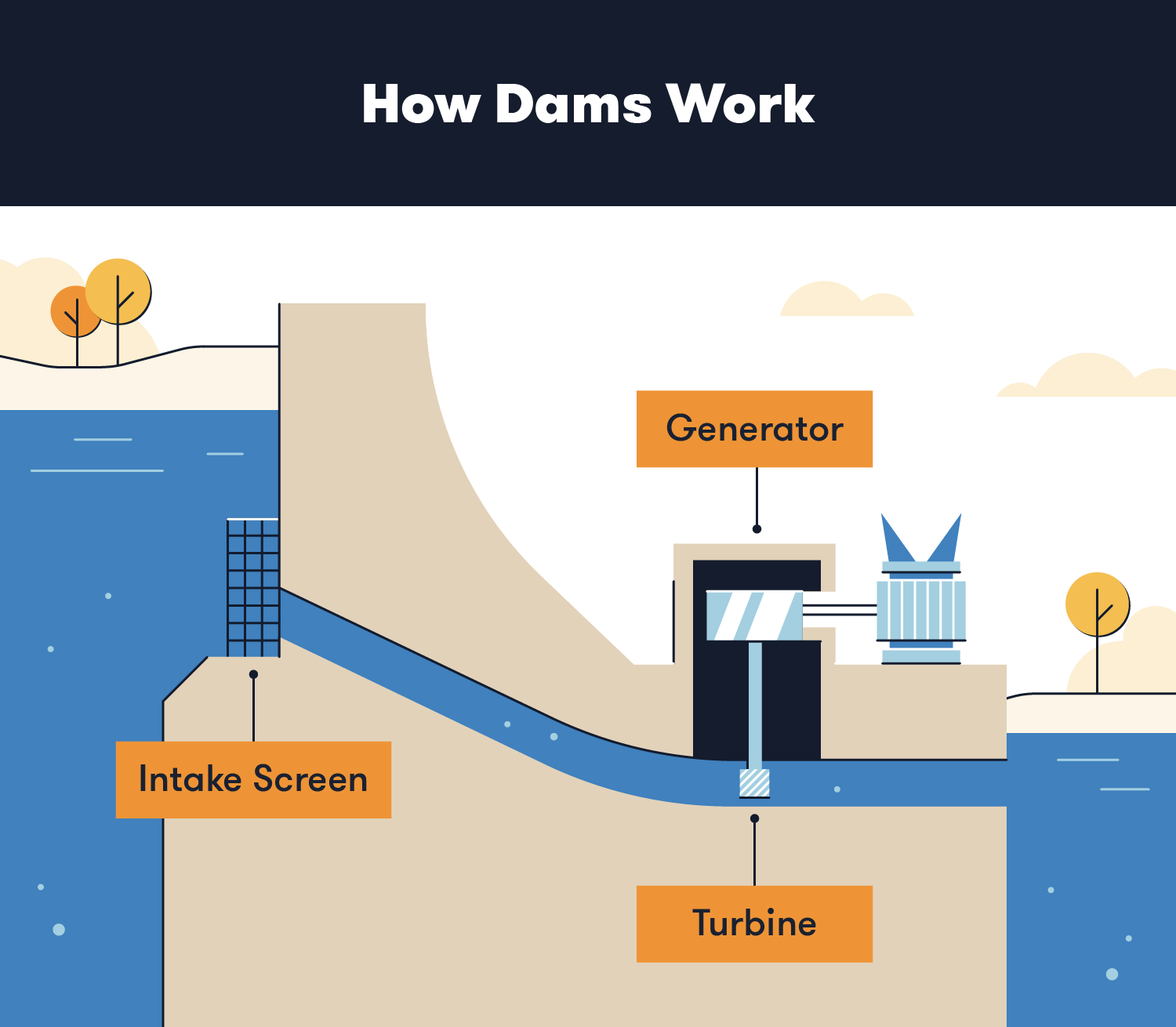
Who Invented Dams?
The invention of dams can’t be attributed to any one person or culture. Rather, we see many different communities making dams independently of one another throughout history.
The earliest dams we know of date back to 2950 BCE in Egypt. Communities along the Nile used simple dams to control the river’s annual flooding. Ancient civilizations like the Sumerians and Babylonians also used dams to help in early agriculture.
What Are the Types of Dams?
There are many different types of dams, each with their own unique advantages. Some of the most popular types of dams include:
- Embankment Dams: These dams, also called rockfill dams, feature sloping sides and are often used for water storage, flood control and hydropower generation. One example is the Nurek Dam in Tajikistan.
- Concrete Gravity Dams: Designed to withstand water force with its own weight, a concrete gravity dam is a massive structure with straight vertical sides. The Hoover Dam is a concrete gravity dam.
- Arch Dams: These dams curve against the water so that any water pressure actually pushes the dam tighter against its supporting walls. They’re common in canyons, like the Idukki Dam in India.
- Buttress Dams: This type of dam has a series of supports, or buttresses, on the downstream side of the dam to evenly distribute the water’s pressure on the structure’s foundation. One example is the Daniel-Johnson Dam in Quebec.
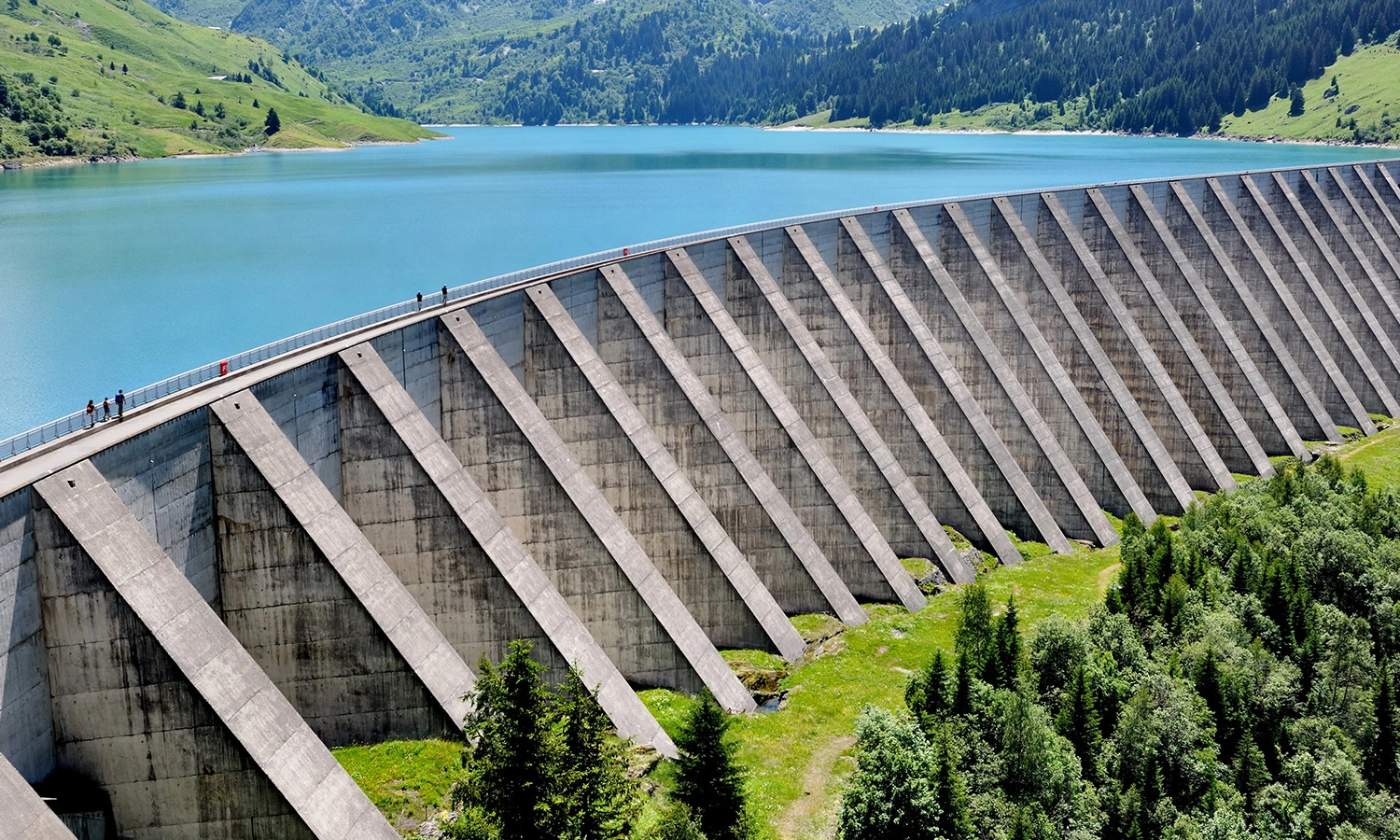
How Long Does It Take to Build a Dam?
It can take anywhere from five to 10 years to build a modern dam. The Hoover Dam, one of the most impressive engineering feats of the time, took five years from start to finish. Today, the world’s largest hydroelectric dam is the Three Gorges Dam in China, which took an incredible seventeen years to finish.
Using the right equipment can go a long way in saving time. Whether you’re building a dam, bridge or other underwater structure, BigRentz has what you need.
Browse equipment rentals today.


